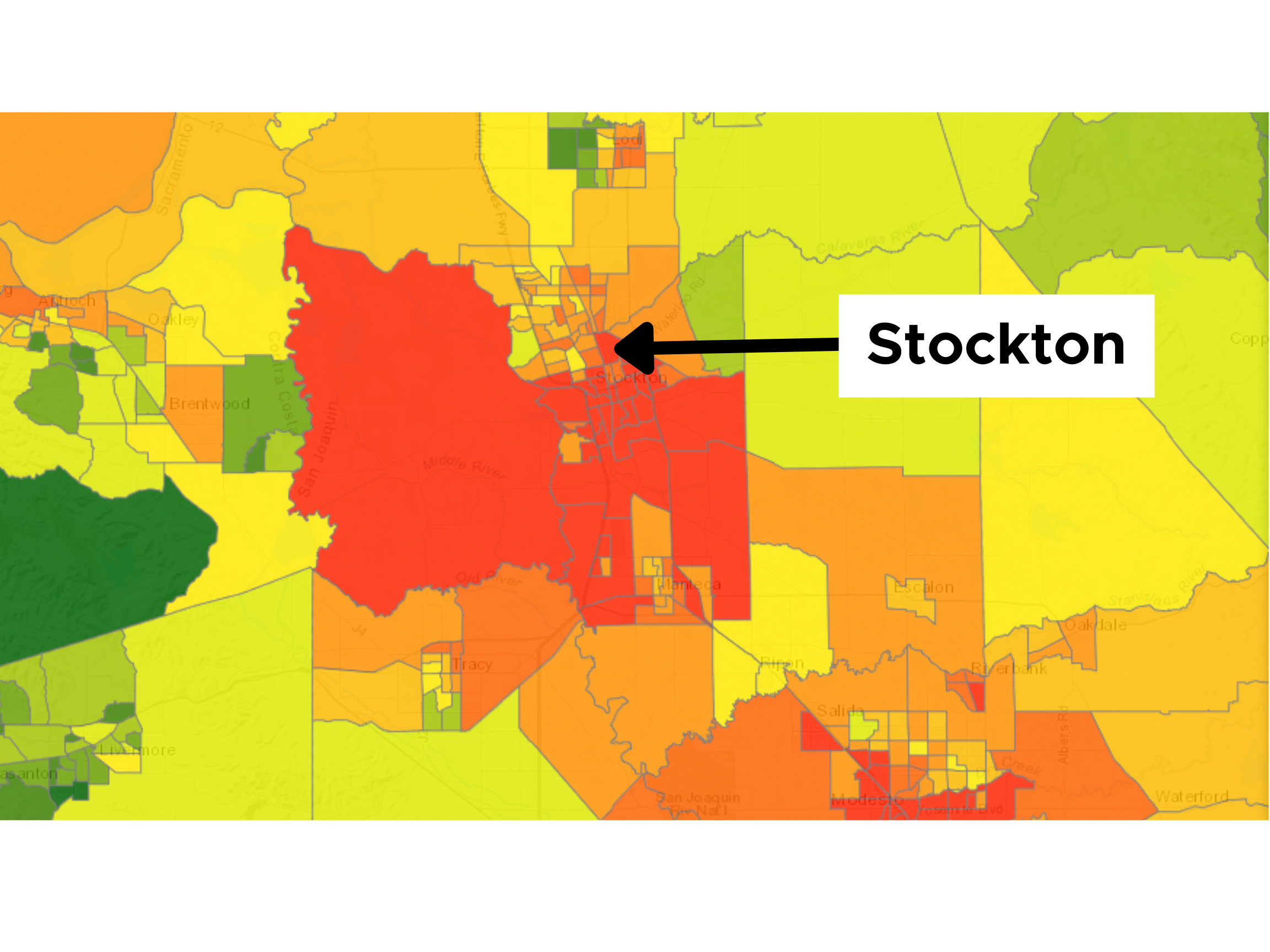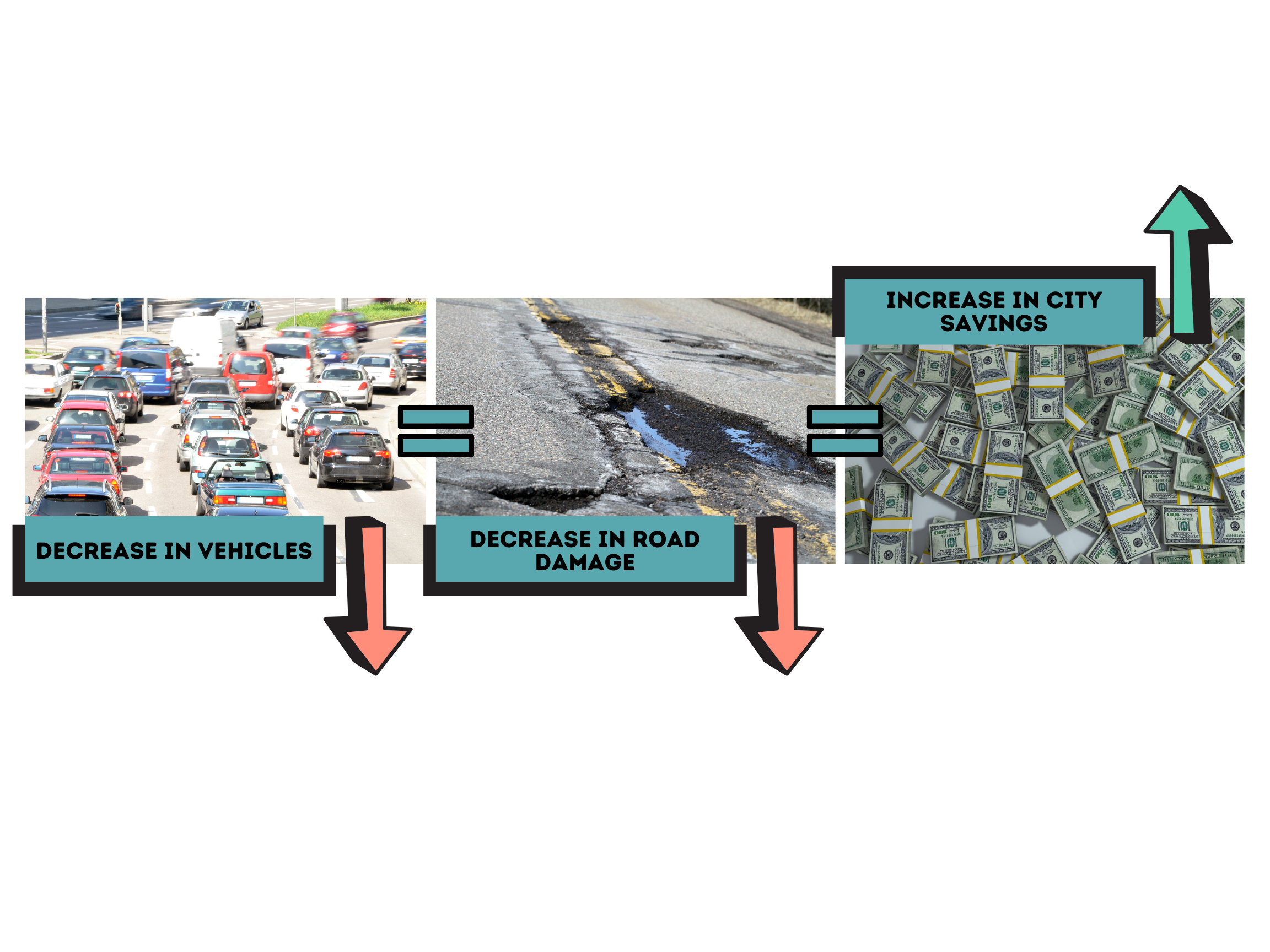How can we improve our air quality?
This section provides an introduction into the CalEnviroScreen 3.0 and information on ways to improve our air quality by exploring concepts in wildfire resilience, urban tree planting, and transportation reformation (electric vehicles/biking/public transit).
As shown in the image above, Stockton and the San Joaquin Valley particularly lack clean air.
The World Health Organization (WHO) identifies air pollution as the greatest environmental risk to human health, with 90% of the world’s urban population living in cities exceeding its air quality guidelines.
Asthma and air quality are related. Although the region’s unhealthy ozone days have fallen 41% since 2000, the region contains some of the most polluted air. According to the American Lung Association, the Bay Area–Stockton metro area ranked eighth in the nation for particulate matter in 2016. More than 27% of San Joaquin County Community Health Needs Assessment survey respondents reported breathing problems as a top community health concern, and 39% of respondents cited air pollution as a major environmental concern.
Source: SJCOG
Wildfire Resilience & Prevention
Wildfires are a major source of air pollution that have been increasing year after year fueled chiefly by the steady increase in yearly climate temperatures. Though wildfires can happen naturally, for example by lightning strikes, nearly 85% of all wildfires are determined to be human caused. Intentional arson, cigarettes, trash burning, and improper extinguishing of campfires are some of the leading causes to major wildfires. These wildfires send up smoke and harmful particulate matter that can enter into our airways and bloodstream causing adverse health effects like asthma. Community members that are elderly, young children, and those with heart or lung disease are especially vulnerable.
Defensible Space
For those living on the outskirts of the city, especially in high risk fire areas, hardening your home and creating a defensible space against wildfires can make a difference in whether your home survives. According to Cal Fire, defensible space is the buffer you create between a building on your property and the grass, trees, shrubs, or any wildland area that surround it. This space is needed to slow or stop the spread of wildfire and it helps protect your home from catching fire—either from embers, direct flame contact or radiant heat. Proper defensible space also provides firefighters a safe area to work in, to defend your home. Creating a wildfire defensible space by installing drought tolerant plants also helps save water.
Tree Planting
The absolute best way to clean up a city’s air pollution is to plant more trees. Take a closer look at the CalEnviroScreen 3.0 and look at the difference between north Stockton and south Stockton. Northern Stockton has a greater presence of trees giving it a lower air pollution score than that of the highly industrialized area in south Stockton. Although urban trees are seen by many to be a nuisance (due to damage sustained from falling branches and consistent maintenance needs), the benefits greatly outnumber the minor inconveniences trees pose in our urban environments. For example, cities that invest heavily in their urban tree canopy see a greater reduction in community asthma rates, effectively saving thousands of dollars in state medical costs.
Explore all the benefits of expanding an urban tree canopy with the video below!
Transportation Reformation
According to the EPA, much of our current air pollution, roughly 27%, comes from the transportation sector. Gas and diesel powered vehicles are responsible for the majority of polluted air within cities, making up approximately 83% of all transportation related pollution.
Electric vehicles
The good news is that many municipalities around the country are actively shifting towards introducing more electric vehicles on the road that do not contribute to air pollution. It’s important to note, that much of our electric energy is still made using highly polluting sources like coal, natural gas, and oil. As we continue to transition to a grid that solely relies on renewable energy sources like solar and wind, our air will continue to become cleaner. Cleaner air means a healthier society where we see decreased asthma rates!
Did you know?
According to streets.mn, “It would take 700 trips by bicycle to equal the road damage caused by one Smart Car. It would take 17,059 trips by bike to equal the road damage caused by an average car. In terms of taxes, for the sake of argument, let’s say that every 1,000 miles traveled in an average sized car equals $1’s worth of damage to the road that will have to come out of City coffers for repair work. A bicyclist would have to travel over 17 million miles to cause the same $1’s worth of damage. Or another way to look at that, for the $1’s worth of damage that a car does to a road, a bicycle, traveling the same distance on the same road, would perpetrate $0.0005862 worth of damage.”
Biking
Choosing to go by bike has several health, environmental and economical benefits! Going by bike for shorter trips (less than 5 miles) is one of the best ways to reduce your city’s air pollution, it can even be a faster transportation option over driving depending on your city’s traffic congestion. Feeling safe while traveling by bicycle is an important factor in whether people decide to choose biking over driving. Complete Streets is the idea that cities have a responsibility to ensure the safety of their people, no matter how they’re choosing to travel down public streets. Choosing to bike over drive to most local destinations can help you reduce the risk of obesity through increased physical activity. Economically, depending on how much you drive, biking can save you hundreds of dollars on gas money! Cities should also take note on the financial benefit of installing safe and effective biking infrastructure as bicycles do far less road damage than cars.







